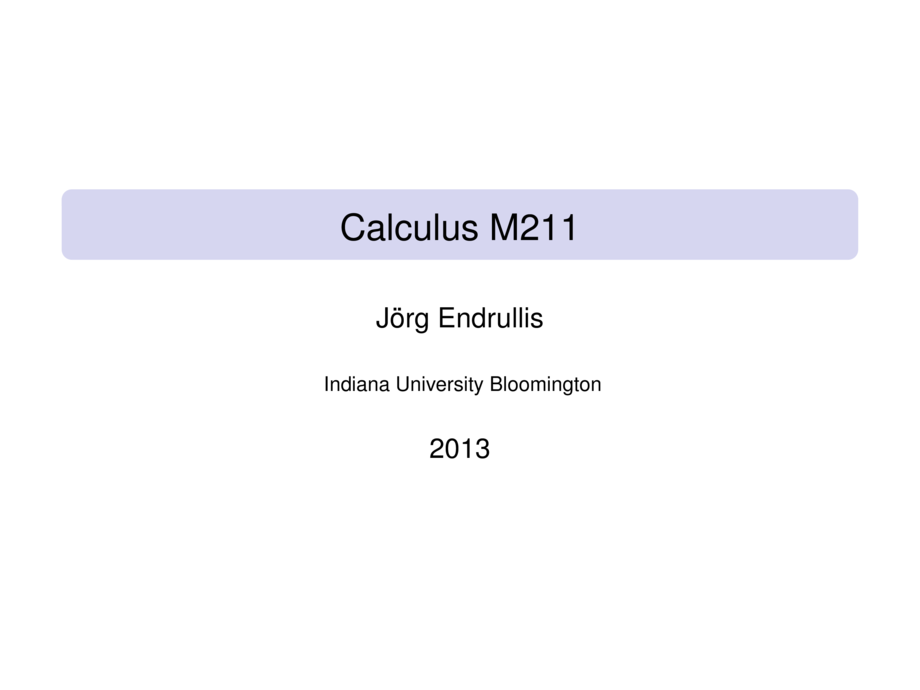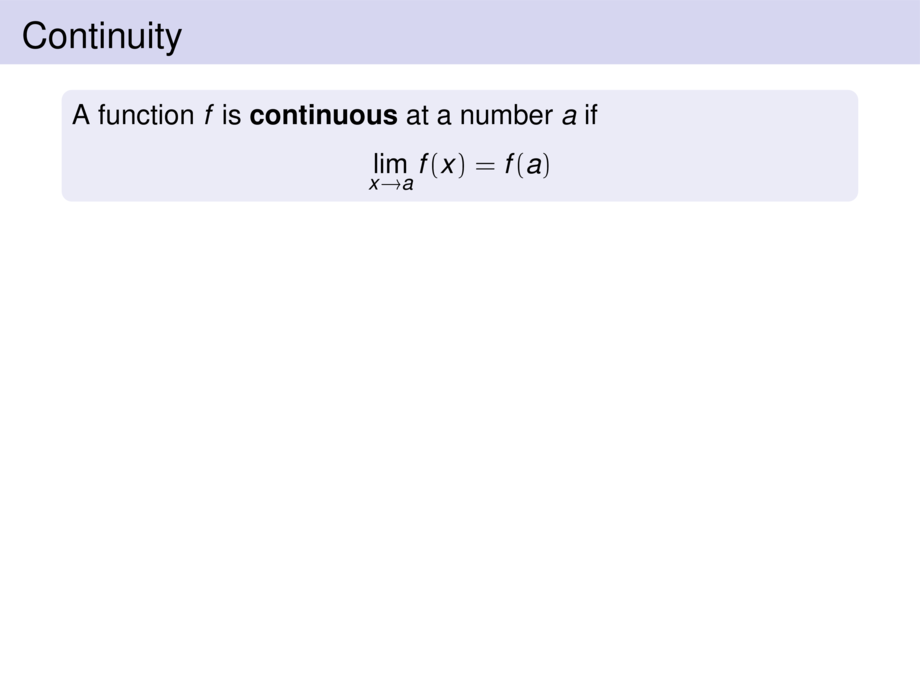



































































































2/98
\begin{frame}
\frametitle{Continuity}
\begin{block}{}
A function $f$ is \emph{continuous} at a number $a$ if
\begin{talign}
\lim_{x\to a} f(x) = f(a)
\end{talign}
\end{block}
\pause\medskip
The definition implicitly requires that:
\begin{itemize}
\pause
\item $f(a)$ is defined
\pause
\item $\lim_{x\to a} f(x)$ exists
\end{itemize}
\pause\medskip
Intuitive meaning of continuous:
\begin{itemize}
\pause
\item gradual process without interruption or abrupt change
\pause
\item small changes in $x$ produce only small change in $f(x)$
\pause
\item graph of the function can be drawn without lifting the pen
\end{itemize}
\pause\medskip
\begin{block}{}
A function $f$ is \emph{discontinuous} at a number $a$ if
\begin{itemize}
\item $f$ is defined near $a$ (except perhaps a), and
\item $f$ is not continuous at $a$
\end{itemize}
\end{block}
\end{frame}

